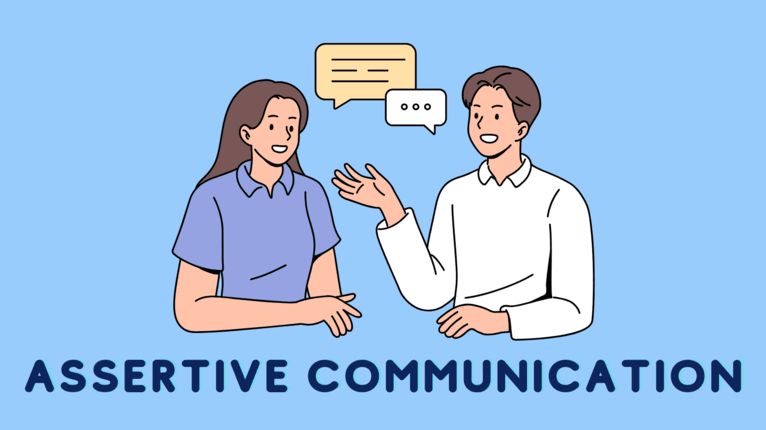Assertive Communication
Assertive communication means communicating needs and feelings directly and respectfully.

Contents
What is assertive communication?
Assertiveness is an effective skill in many domains. However, whether it is communication with family or at work, being assertive is one of the most effective communication skills, whether it is communication with family or at work.
Plus, assertiveness training is linked to better outcomes, from successful educational results to job and personal satisfaction.
An assertive style of communicating is neither aggressively forcing personal opinions on other persons nor shirking from speaking up.
How to be assertive
Assertiveness means you maintain clear, courteous, and consistent communication.
- Be clear
Avoid dressing up your message; communicate clearly your feelings, needs, or thoughts clearly.
- Be consistent
Maintain your discourse - whatever you express today reflects what you said the day before.
- Be courteous
When you speak up for yourself, you maintain respect for the listeners, and the message is communicated in a way that doesn’t pass judgment.
As regards assertiveness training - to become an assertive communicator - you have to keep in mind a few tips mainly related to facial expressions, such as:
- Maintaining eye contact
- Voicing your desires and needs confidently
In addition to this, it is essential to learn to express yourself clearly (say no/say yes) and take ownership (use statements “I”/”Me”/”My”).
Benefits of assertive communication
Acting and communicating assertively represent a skill that contributes to people’s ability to establish and maintain healthy relationships. Also, the benefits of assertive communication include: resolving easily interpersonal conflicts and preventing your needs from being repressed or stifled.
Top benefits of assertive behavior:
- Communication is straightforward, simple, and appropriate, which reduces aggressive responses and misunderstandings.
- Increases confidence, improves communication in relationships, and cultivates mutual respect.
- It helps in gaining better problem-solving-oriented thinking
- Stimulates a conflict resolution attitude
- Assertiveness influences organizational, team, and individual performance
- Discourages passive behavior (passive response) and encourages productivity
Communication can be verbal and nonverbal. An assertive response transmits that you can stand up for yourself without disrespecting or giving others a hard time.
Studying and practicing assertiveness means increasing your self-esteem and improving interpersonal skills, which leads to healthy relationships with your loved ones and colleagues and job satisfaction.
Differences between assertive, passive, and aggressive communication
Let’s explore the differences between assertive, aggressive, and passive communication.
Frequently, assertive communication is confused with other communication styles. The best way to differentiate these three types of communication is to define aggressive and passive communication:
Aggressive communication can be described as strongly expressing and communicating opinions and feelings. Verbal characteristics of aggressive behavior include demanding, commanding, yelling, shouting, blaming, and being verbally and physically abusive.
Communicators can display passive behavior through verbal and nonverbal ways: inability to say no, poor body posture, and little or no eye contact.

Assertive communication and active listening
Assertive communication and active listening
A great discussion needs mutual respect between people. But excellent communication combines various factors - assertiveness, empathy, and active listening.
Active listening is the ability to let the other person know you understand by confirming and reinforcing their message.
References
Psychology Tools, Assertive Communication, https://www.psychologytools.com/resource/assertive-communication/
Berkeley Well-Being Institute, Assertive Communication: Definition, Examples, & Techniques, https://www.berkeleywellbeing.com/assertive-communication.html
Science Direct, Aggressive Communication, https://www.sciencedirect.com/topics/psychology/aggressive-communication
Alvernia University, 4 Types of Communication Style, https://online.alvernia.edu/articles/4-types-communication-styles/
HealthLine, Assertive Communication is Healthy, Not “Bossy” - Here’s Why, https://www.healthline.com/health/assertive-communication